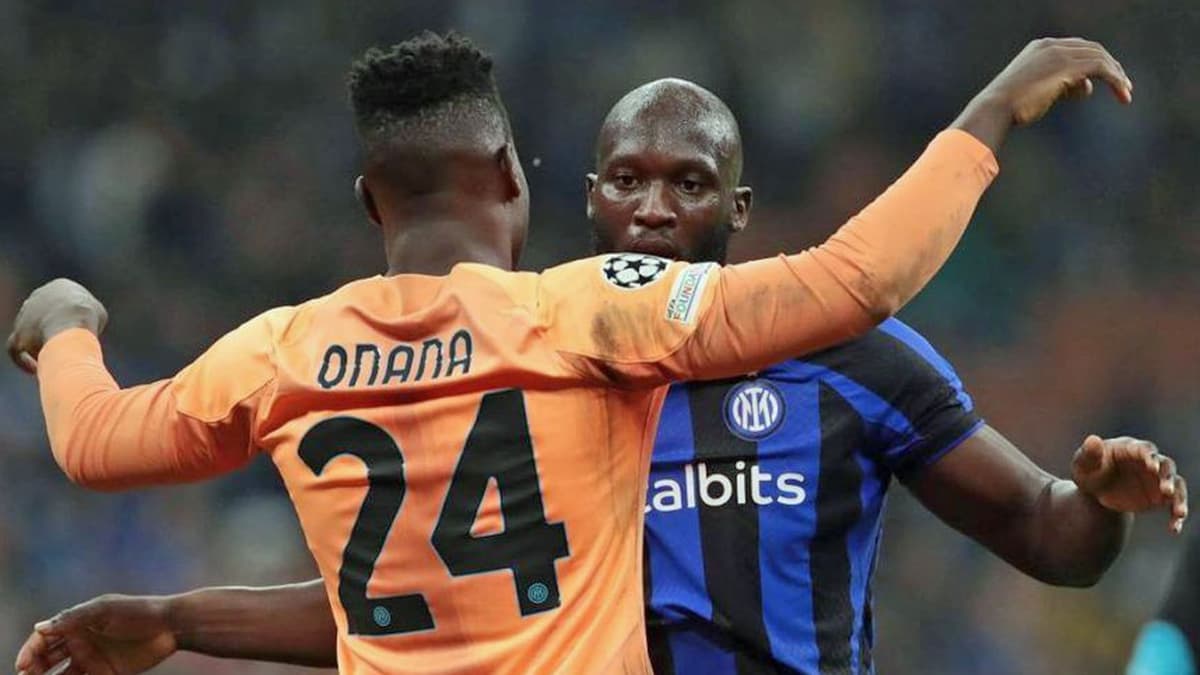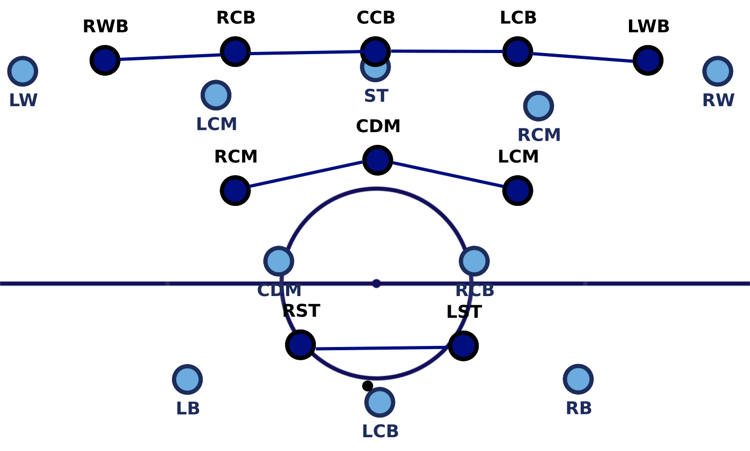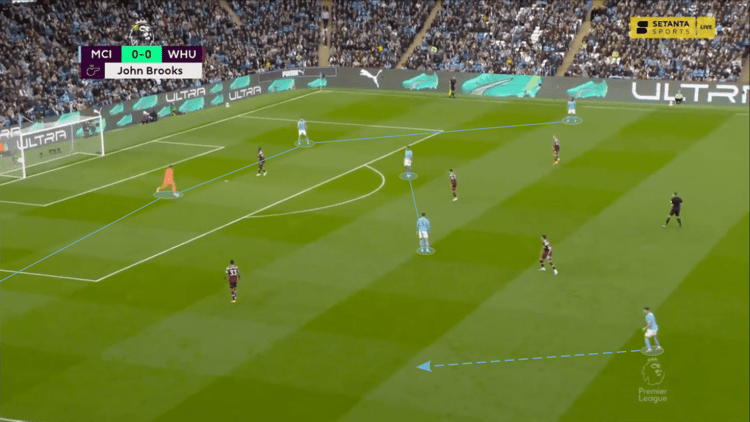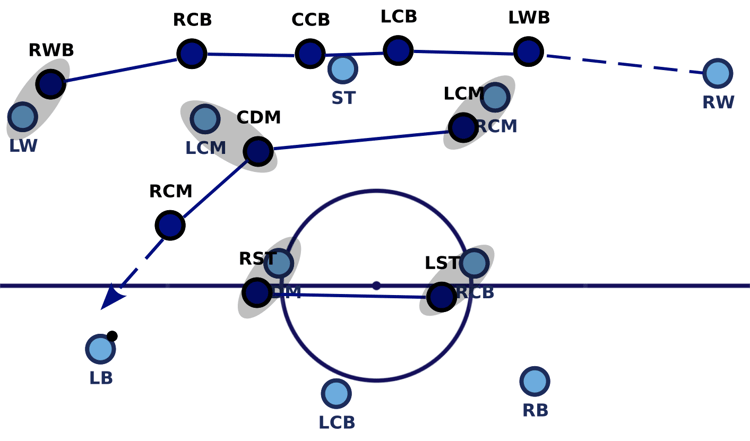-
Nieuws
- 1 hour ago
How Inter can BEAT Man City by learning from Man Utd and Big Sam

The 2022/23 season is ending, so we just have one big match left: the UEFA Champions League final. It will feature Manchester City, widely regarded as the best team in Europe, and Inter, the third-best team in Italy if the Serie A table is to be believed.
Unsurprisingly, then, this could be one of the most one-sided Champions League finals we see. Various pre-match prediction models give Manchester City close to a three-in-four chance of winning, which is more than anyone has had for the last couple of decades.
Clearly, Inter are going to need to do something special to deny Manchester City their first Champions League title.
Luckily for them, we have some ideas:
Restricting Manchester City in a defensive block
Obviously, Manchester City are going to set out to dominate possession as they always do, and there is little that can be done to stop them from doing so. So, Inter must work out a very solid defensive strategy to restrict them.
Let us pull out the tactics board and start brainstorming. We should not expect Inter to deviate from their usual 3-5-2 formation which drops into a 5-3-2 block, so let us take a look at how that might match up against Manchester City’s now-popular 3-2-2-3 structure in possession.

For a very basic starting point, this does not look too bad for Inter. There are no glaring overloads or structural weaknesses in their shape, so they can certainly come up with a strong defensive plan starting with this.
Let us also take a moment to think about their approach – should they simply sit back and defend in a block or should they also try to step up and press at times? Pressing might be seen as a more positive defensive approach, but against Manchester City, there is a fine line between being positive and being naive.
Pressing Manchester City’s 3-2 base is hard enough, but when you try to do that, it effectively becomes a 4-2 structure because the goalkeeper gets involved too. And, if that is not enough, their advanced midfielders also tend to drop back and pull out wide to offer passing options to beat the opposition press.

And there are absolutely no weak links in their build-up structure. They have arguably the best ball-playing goalkeeper in the world, top-class centre-backs and one of the most secure defensive midfielders out there at the moment. Heck, they push one of their centre-backs into midfield and he does stuff like this:
Why does Guardiola play John Stones as a DM in possession?
Technical quality, coolness on the ball, body orientation when receiving, ability to handle pressure coming from behind.pic.twitter.com/J7s3oZ4XbG— Marco Lai (@MarcoLai_23) June 3, 2023
Clearly, trying to press Manchester City is a futile exercise, so Inter must look to defend in a compact block at all times. Let us expand on some specific details to work out how they can best restrict the Premier League champions.
Many teams defending in a block against Manchester City have realised that the best way to stifle their progress is to prevent them from accessing their double pivot in midfield. The most recent team to try that were Manchester United, who set up in a 4-2-4 block with a very narrow front-four in the FA Cup final.

Of course, the Red Devils ended up losing the match after conceding twice, but their defensive performance in open play was pretty good. They were able to restrict their opponents to just nine shots from open play worth about 1.1 xG altogether, which is pretty good by Manchester City standards.
Of course, Manchester City have their ways to try and work around such defensive blocks, and one of their key tactics in the FA Cup final was to send one of their wide centre-backs close to the touchline and progress through them.

These are a couple of things Inter must consider while thinking about how to stifle Manchester City’s build-ups, but they also have to stop the attackers. Let us get some ideas about how that might be done.
Perhaps the most dangerous and threatening players for a positional defensive set-up facing this Manchester City system are their two advanced midfielders. The reason behind that is that they have a lot of freedom to drift around to receive passes and create overloads as we previously discussed.
To stop them, then, the best way would be to simply player-mark them. One of the teams that did this were Leeds United in Sam Allardyce’s first match in charge for them, and it worked relatively well for them as they were able to stay in the game right till the end and only lost 2-1.

With all of that in mind, here is how Inter can set their block up to contain Manchester City as much as possible:

Here is how it will all work: the two strikers will stand right in front of the opposition double pivot and prevent their player from being able to see the ball, therefore eliminating them as a passing option. As we saw with the Manchester United example, City’s counter to this would be to progress through the wide centre-backs, but that is where Inter’s three-player midfield proves useful.
What Inter can do is use a rotating player-marking set-up to track City’s advanced midfielders. So, Inter’s far-side midfielder (the one on the other side of the pitch relative to where the ball is) can track City’s far-side midfielder, and Inter’s central midfielder can track City’s near-side midfielder. This frees up Inter’s near-side midfielder, who can then step out and close down the ball-carrier.
Across the back line, the wing-backs will be tasked with following Manchester City’s wingers fairly closely when on the ball-side, and tucking inside to help protect the centre when on the far-side. Inter’s wide centre-backs might have the most important roles, as they will have to position themselves in a way to prevent City’s advanced midfielder from having space in behind on the near-side while also being prepared support the wing-back when on the near-side, and double up on Erling Haaland with the central centre-back on the far-side. This two-on-one match-up should be enough to keep the prolific Norwegian striker quiet, but you can never be too sure with him.
As robust as this defensive set-up might be, Manchester City will always be able to find some weaknesses. If Inter execute this gameplan well, they should be able to prevent City from playing through them, but still might be weakened by crossfield switches. In such cases, their whole block will have to shift from one side to the other quite quickly, and the moments when their player-marking in midfield gets broken (as their central midfielder goes from one side to the other) could prove costly unless they are very quick.
Still, this seems to be the best way for Inter to keep Manchester City quiet using their 5-3-2 structure, and if every player does their job, a clean sheet might well be attainable.
Smash and grab: Using set-pieces and Lukaku’s impact
But even a clean sheet might not be enough to beat Manchester City, because the game could still go to penalties.
Inter might take such a scenario if presented with the option right from the kick-off, but of course, they would be more than happy to win the match outright. To do that, they must score a goal.
One of their best avenues to do so might be set-piece situations. Inter have been one of the most dangerous sides from set-pieces in Serie A this season, scoring 11 such goals. Their tally of 168 shots from set-pieces is the second-highest in the league, and they might feel they could have gotten a couple of more goals from them because their cumulative xG tally from set-pieces has crossed 14.
Between three centre-backs, one aerially dominant striker and one or two fairly tall wing-backs, they certainly have enough dangermen for dead-ball situations, and Hakan Calhanoglu will never disappoint with his deliveries. Neither will Federico Dimarco.
But to do as much as win set-pieces, Inter must get the ball up the pitch. That is a tough task in itself when faced by Manchester City’s formidable press, which has even shaken the likes of Real Madrid and Bayern Munich in their Champions League campaign so far. Inter themselves are not even the best at slowly building out from the back, so they simply should not try to do so.

Instead, they should take a very direct approach on the ball, both after turnovers to counterattack and from goal kicks or similar situations. Up front, Edin Dzeko should be expected to start alongside Lautaro Martinez, so the Bosnian can be used as a target man while Martinez and the two number eights can try to pick up the second balls. If they can get close to Manchester City’s box in this way then that is great, and even if not, they should try and win fouls to get attacking set-pieces at least.
Dzeko may start the game, but he most likely will not finish it. The reason behind that is that Simone Inzaghi almost always replaces him with Romelu Lukaku around the hour-mark, giving the Belgian striker a fair bit of time to torment tired opposition defences with his fresh legs. Even if the scores are level when he comes on, it is reasonable to expect City to push harder to score, but that may leave more space in behind which would only increase Lukaku’s potential threat.
Clearly, though, the key to everything for them is a solid defensive showing, so that must be their first priority. The odds are always going to be stacked against them and no matter what they do, Manchester City have enough quality to play and win on their own terms, but the least they can do is back themselves and give it a proper go.
If everything goes to plan, Inter could become the first team to defeat Manchester City in their last 25 meaningful matches, and even if not, there still is a chance for their penalty practice to come in handy.



















